History
After the Revolutionary War, expansion into the western frontier was prevalent. Many soldiers were granted land in lieu of payment for their service. This led to areas in western New York to Ohio to grow tremendously. Roads were scarce and travel relied on established Native American trails. In the 1790s, the State of New York set forth funds to create and build what would be commonly referred to as the first Cherry Valley Turnpike.
- The First Great Western Turnpike opened in 1799 from Albany to Cherry Valley.
- The Third Great Western Turnpike opened in 1806 from Cherry Valley to Cazenovia.
- The Cherry Valley Turnpike was completed in 1816 from Cazenovia to Skaneateles.
The Cherry Valley Turnpike would join with the Great Genesee Road in Skaneateles. The Great Genesee Road was built starting in 1794 and connected Fort Schuyler (present day Utica) to the Genesee River at Canawaugus (present day Caledonia). The original road followed what is now Route 5 to Chittenango and then followed what is now NY Route 173 to NY 175 into Skaneateles. By 1806, an alternate route (the Seneca Turnpike) was extended from Chittenango through Syracuse and then to connect again at Auburn (present day Route 5). This would prove to be the more popular route and greater maintenance was made to this road than its original southern part.
The Google Map link below shows the popular historic turnpikes associated with Route 20.
US Route 20
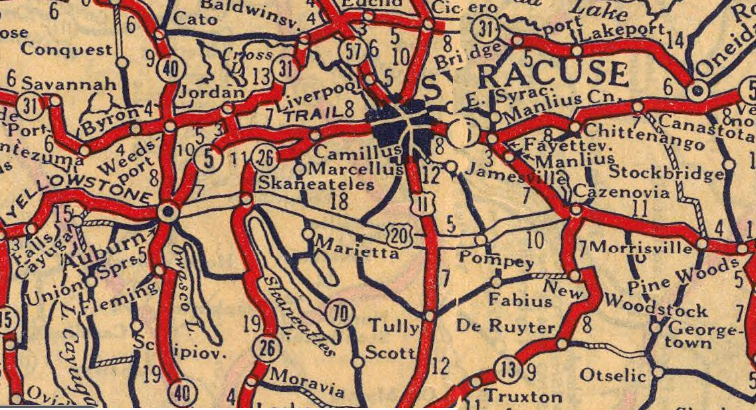
When New York decided on what roads would become US Highways, state officials did not want Route 20 to connect through the major cities of the state, except for Albany. They actually referred to Route 20 as the “airline route”. The major city route would be NY Route 5.
In 1926, Route 5 was in better shape and even paved. The road between Auburn and Cazenovia was dirt or gravel. East of Lafayette and East of Pompey Center, the dirt road was straight across the deep glacial valleys. The road was so steep that some trucks and automobiles had to go up the hills in reverse – as there were not any fuel pumps and if gas was low in the tank, the car would run out of gas.


Improvements

Improvements on US Route 20 began on July 15, 1929. The section of Route 20 would be closed between Cazenovia and Skaneateles until the project was complete. The state divided the project into four sections.
- Skaneateles to Lords Hill (Navarino)
- Lords Hill to Lafayette
- Lafayette to Pompey
- Pompey to Cazenovia
This was considered to be one of the biggest engineering projects in New York for the time. The entire section of Route 20 was closed and traffic was detoured to take NY 5 out of Auburn through Syracuse to Fayetteville and then NY 92 to Cazenovia.
With such steep grades, the road was moved to lessen the grade or filled to make the climb out of the glacial valleys easier. The first section graded was the Skaneateles-Lords Hill (Navarino) part. Work stalled on the Lords Hill-Lafayette section as four contractors were hired – the first three could not complete the job. A complete realignment around the hamlet of Cardiff was also planned with a viaduct constructed to bring the road out of the hill and over NY 11A.
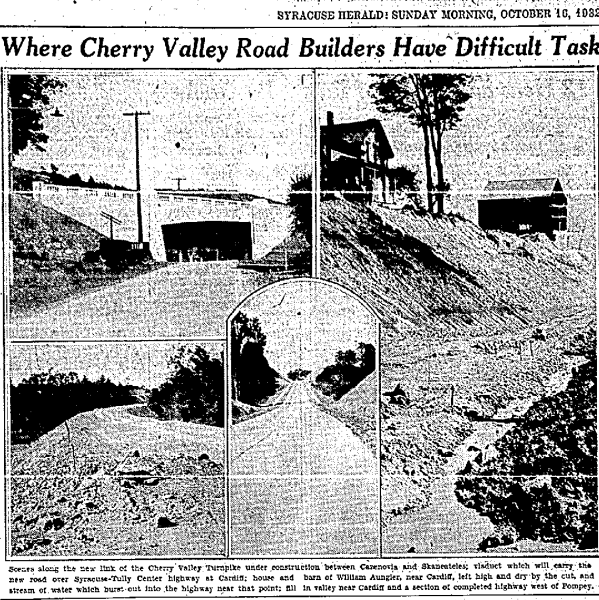
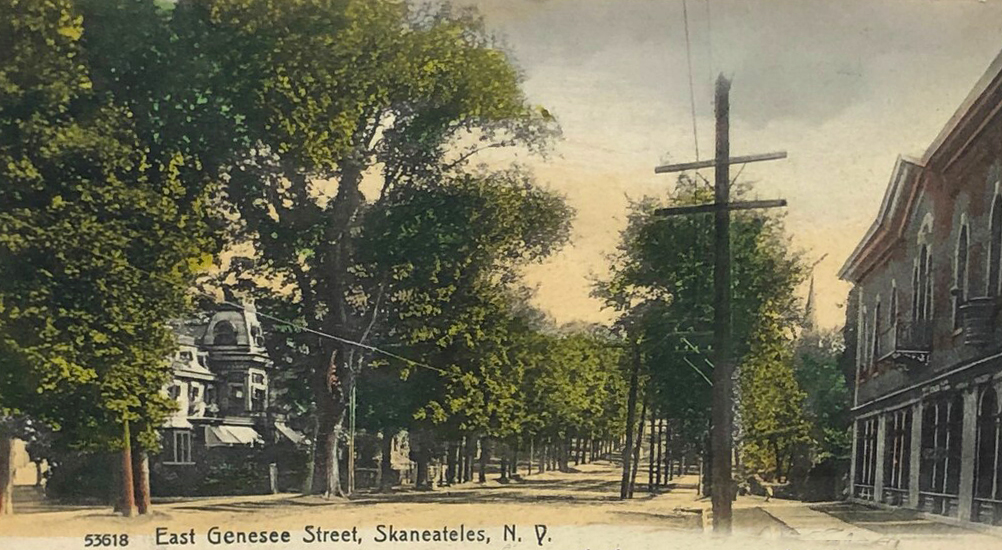
The first paving project was to connect Auburn to Skaneateles with a new concrete road. This opened to traffic in September 1929. The Village of Skaneateles completed paving their road in October, 1929. The larger project took several years to complete, originally slated to take two years, it in fact took four.

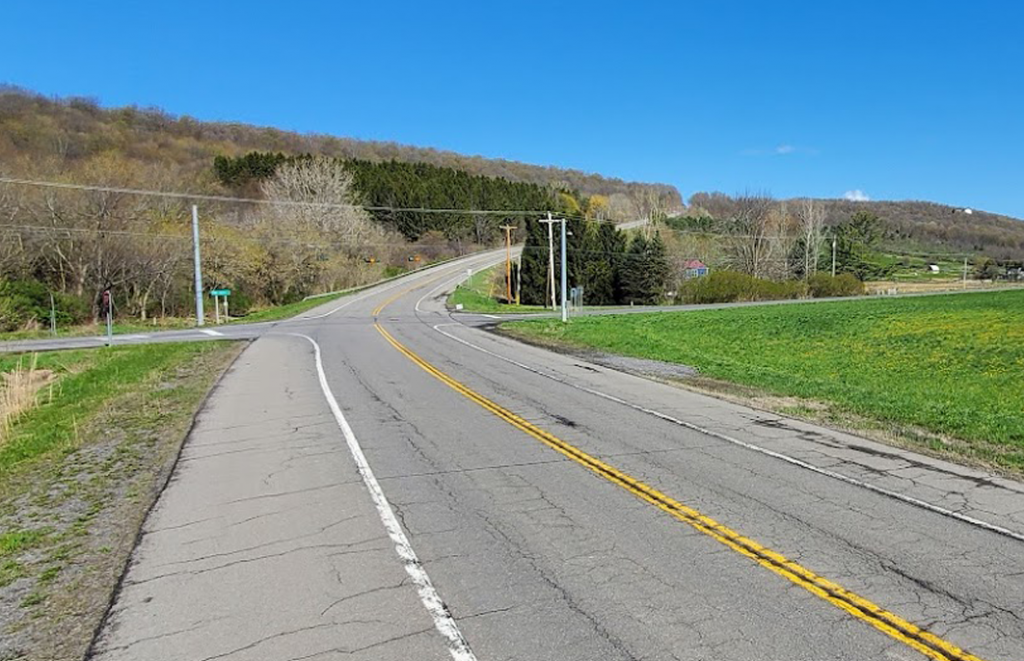
The first section completely paved was the Lafayette-Pompey section and opened to traffic in November, 1930. Skaneateles to Lords Hill in the summer of 1933. Lords Hill to Cardiff in December 1933. The section between Skaneateles and Lafayette opened on July 8, 1934. The final stretch, the steep hill between Pompey and just west of Cazenovia opened in August 25, 1934.
Route 20 Opens
A ceremony was held in Skaneateles, NY on August 25, 1934 for the opening of the newly completed Cherry Valley Turnpike – US Route 20 – between Auburn and Cazenovia was now paved and complete across the state of New York.

Conclusion
Today travel across 20 between Cazenovia and Auburn is as it was intended, a scenic drive through rolling landscapes, big vistas and shimmering lakes. Look closely and you will notice street names like Genesee Street or Cherry Valley Turnpike.
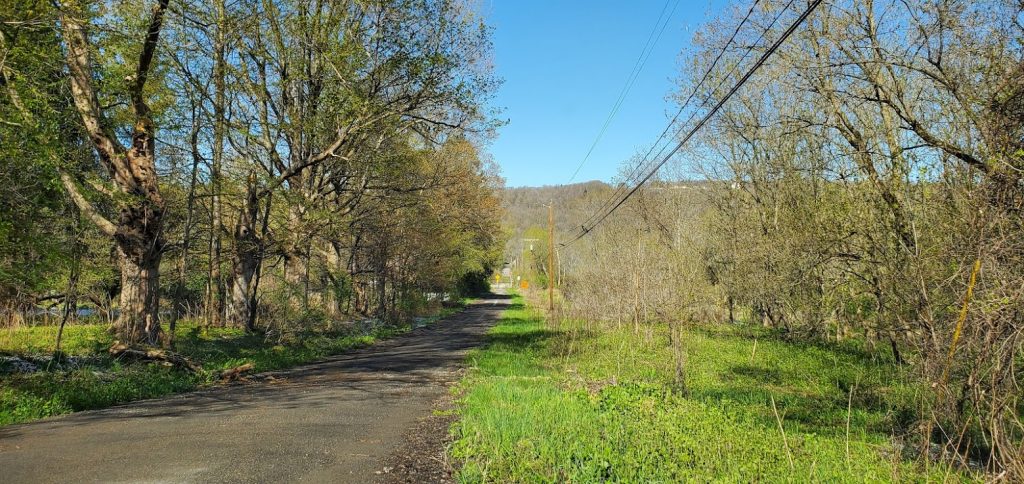
Next
When New York State completed this project, they turned focus to improve the route between Cherry Valley and Sloansville. The first four lane section of US Route 20 in New York.

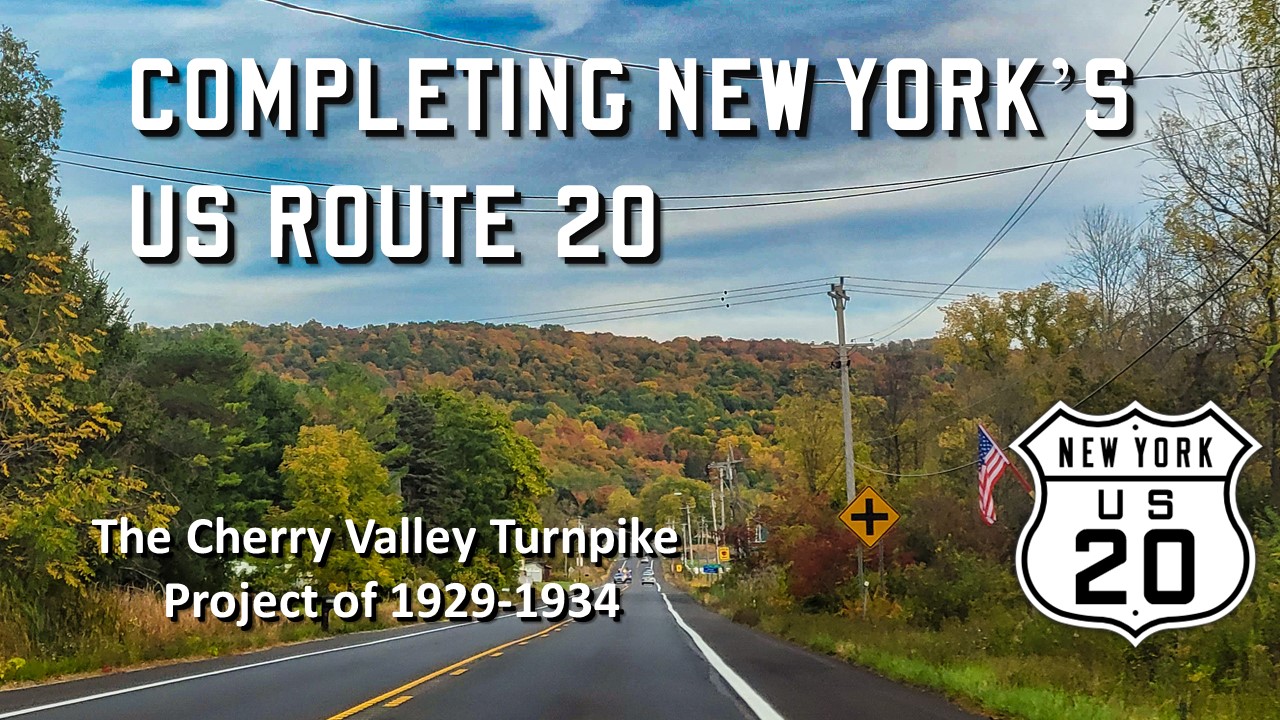
I started going to my grandparents camp in 1946.It took twohours from Westvale,a suburb of Syracuse,to Cazenovia.Their camp was once a hotel for the men who cut ice on the lake.I am the oldest grandchild,whom my grandpa bought camp for.He named it,Hoe and Mow Acres,Mildred and Harold Haight.They lived to see their great grandchildren enjoy the lake and camp.At the end of the road camp was on ,was Route 20,perpendicular to their road.The railroad ran through their propert,as that was where ice was loaded up.The old cinder railroad bed was still there until I turned 24.